

Just down the road from the Tempio del Valadier is a tiny village, San Vittore di Genga. It is named after the abbey that is there, San Vittore. From Wikipedia:
San Vittore alle Chiuse is a Roman Catholic abbey and church in the comune of Genga, Marche, Italy. The edifice is known from the year 1011, and constitutes a notable example of Byzantine-influenced architecture in Italy.
You can see that this village is still in the Frasassi valley. The abbey is located to the right, outside the frame of this picture.
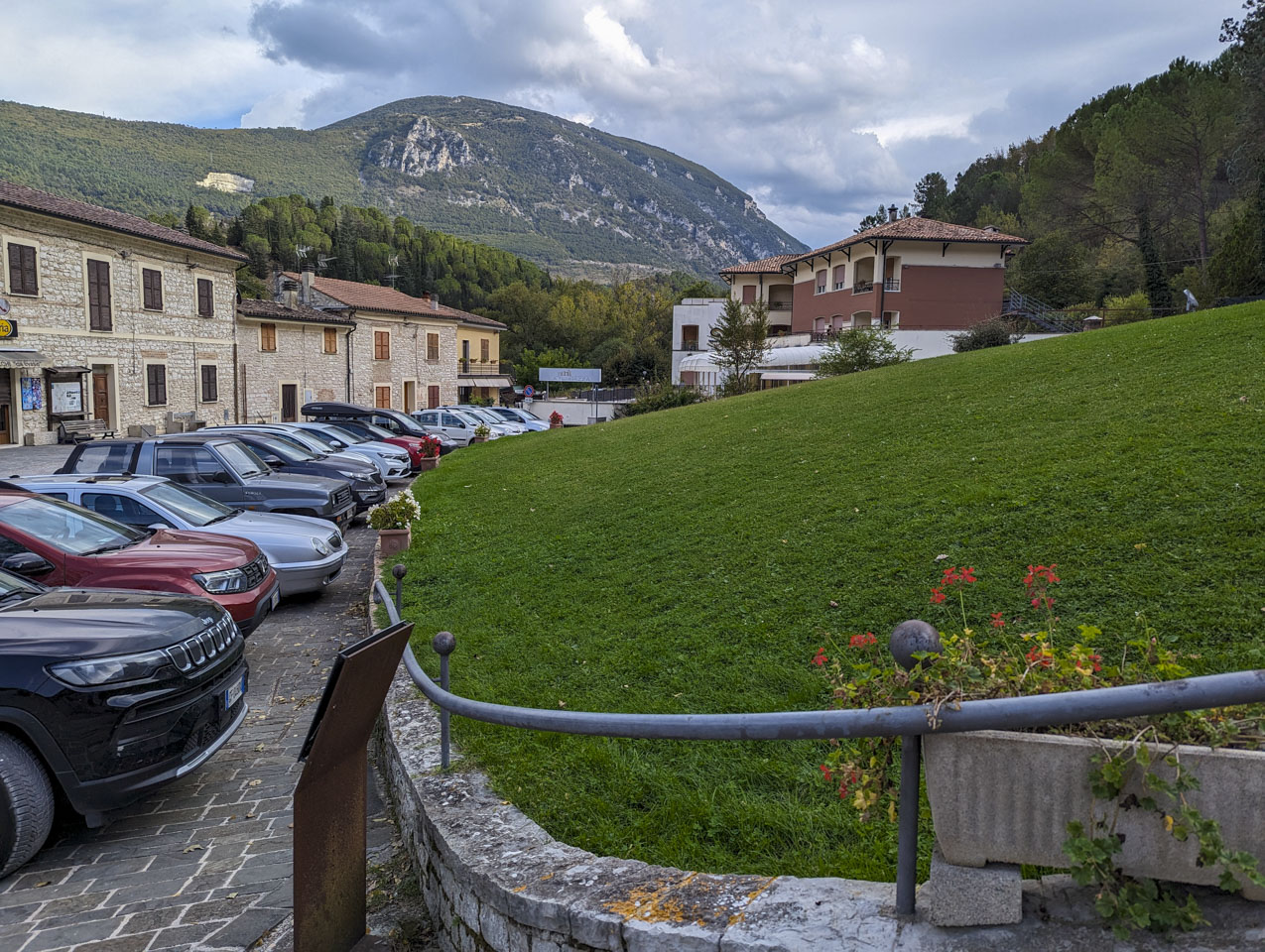
The abbey and church building itself is very sturdy.
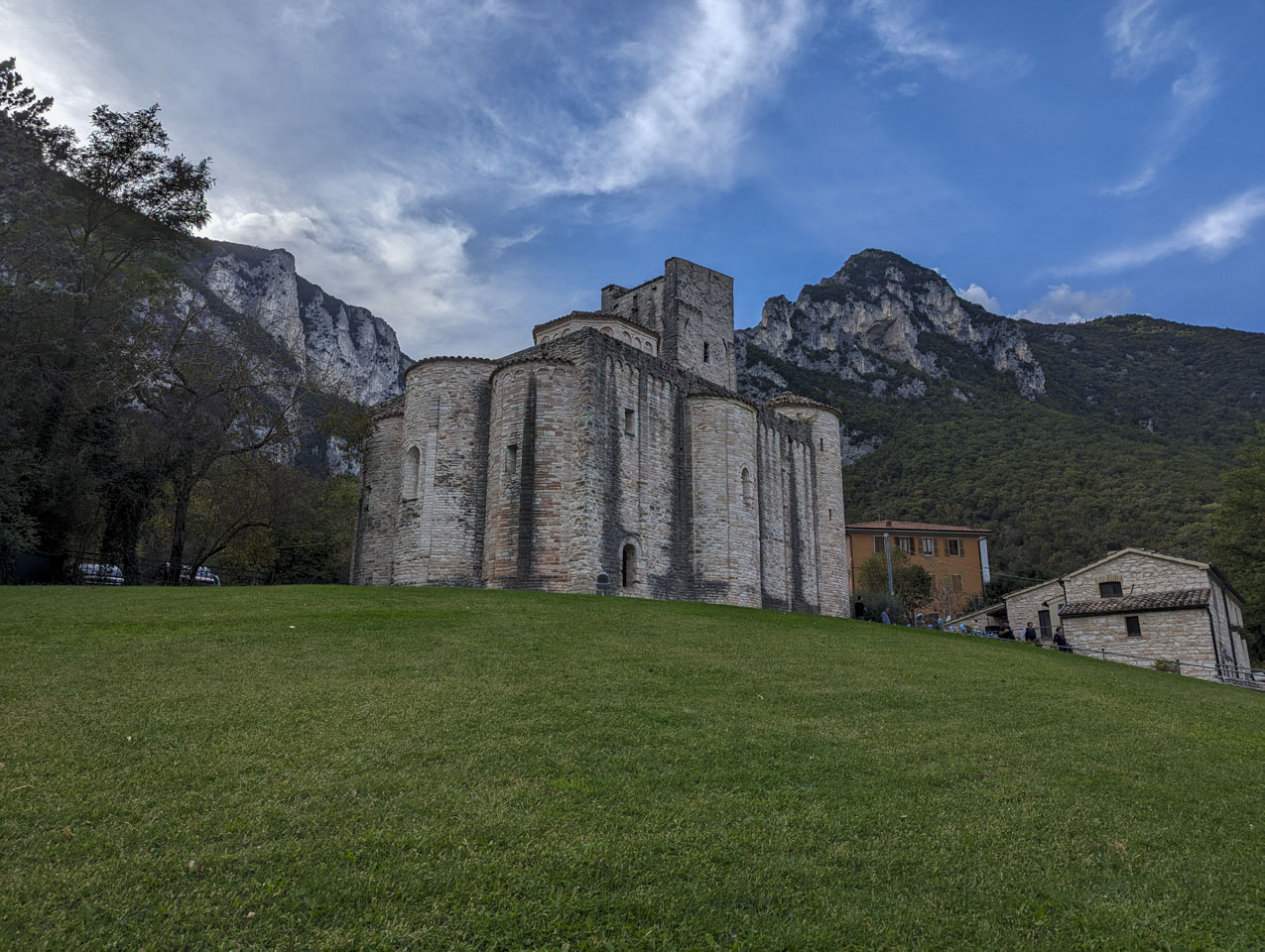
Francesco commented that it seemed unbalanced, aesthetically, with the center section too narrow with respect to the outer aisles. This was likely because the builders were uncertain how much they could support with their columns. (Using 'an abundance of caution', as the phrase goes.) They had plenty of support!
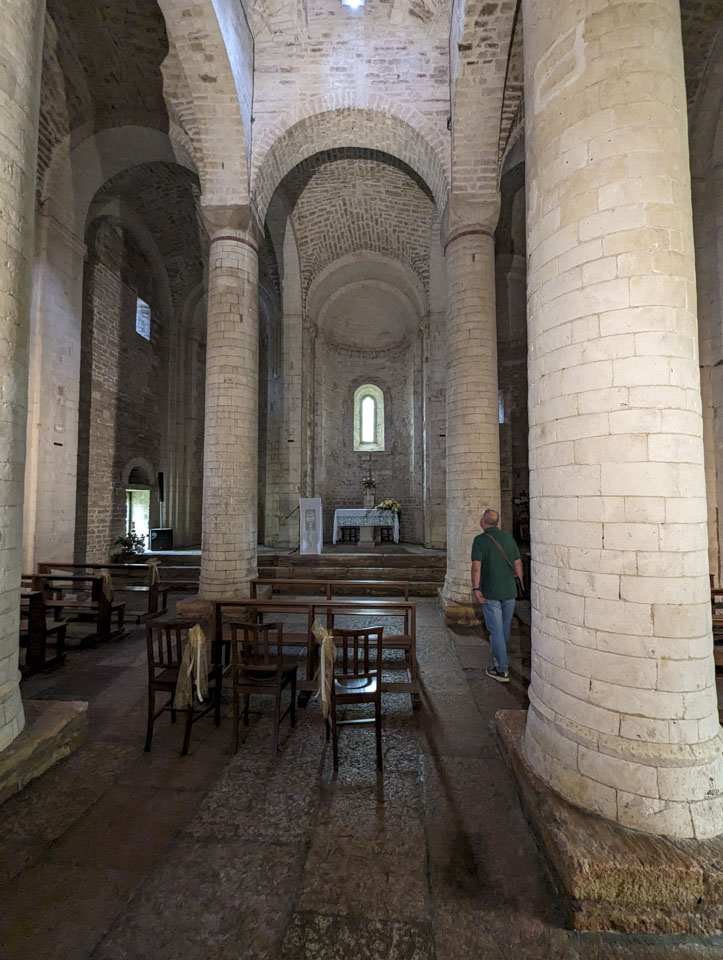
The temple and pulpit cloths are not lace; they are crochet.
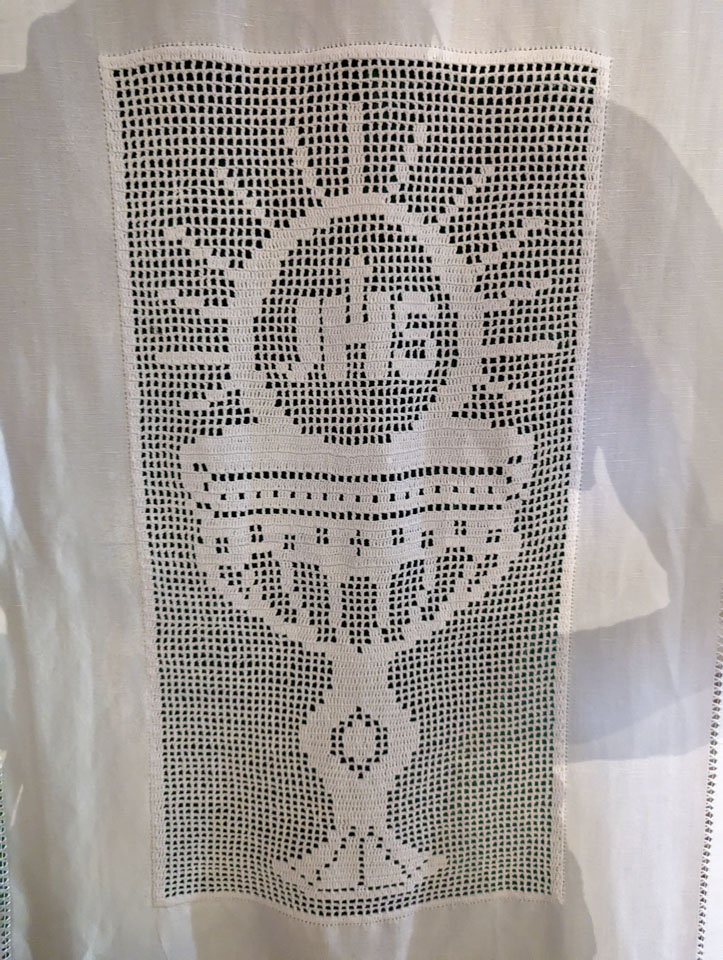
The ceiling is as sturdy looking as the rest of the building.
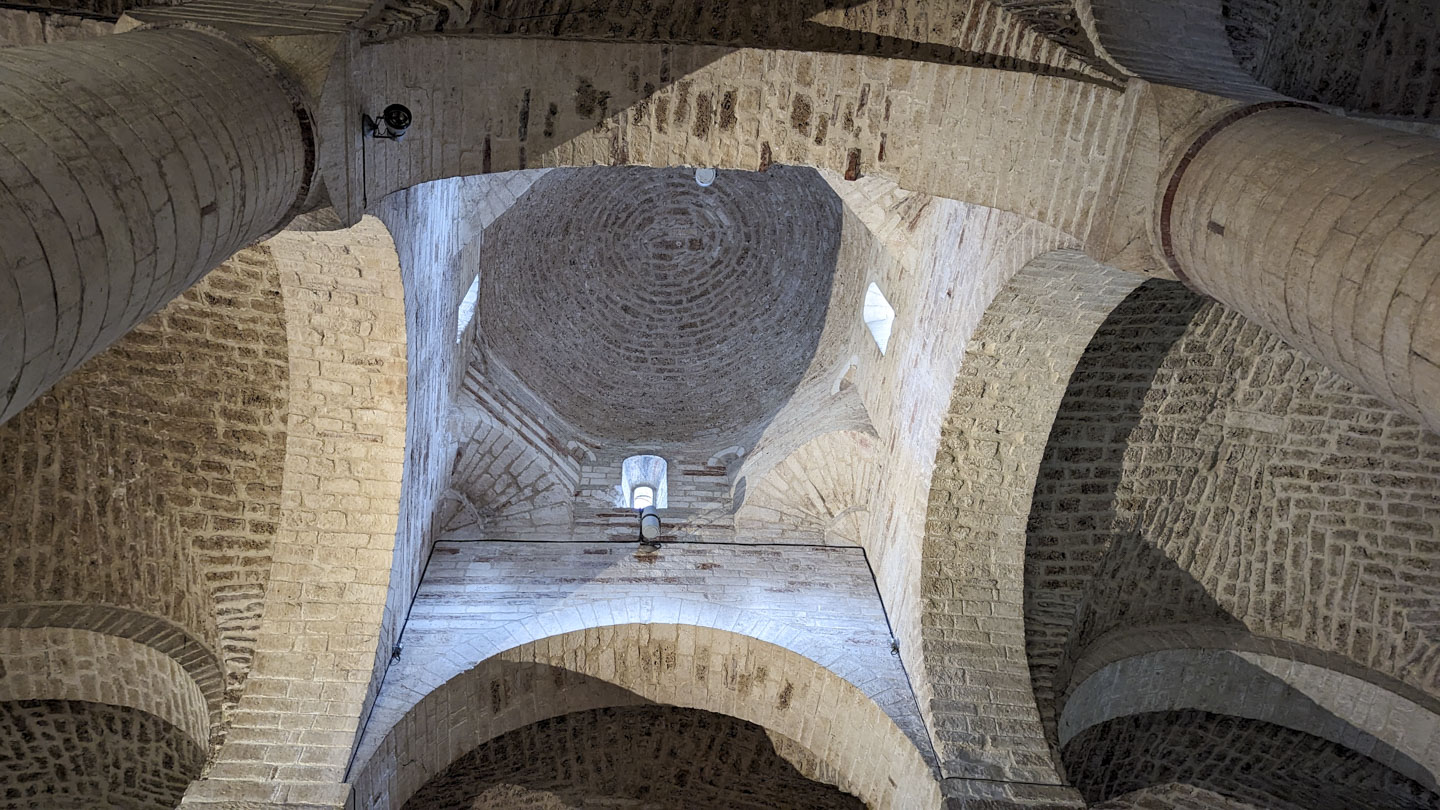
We lit a candle.
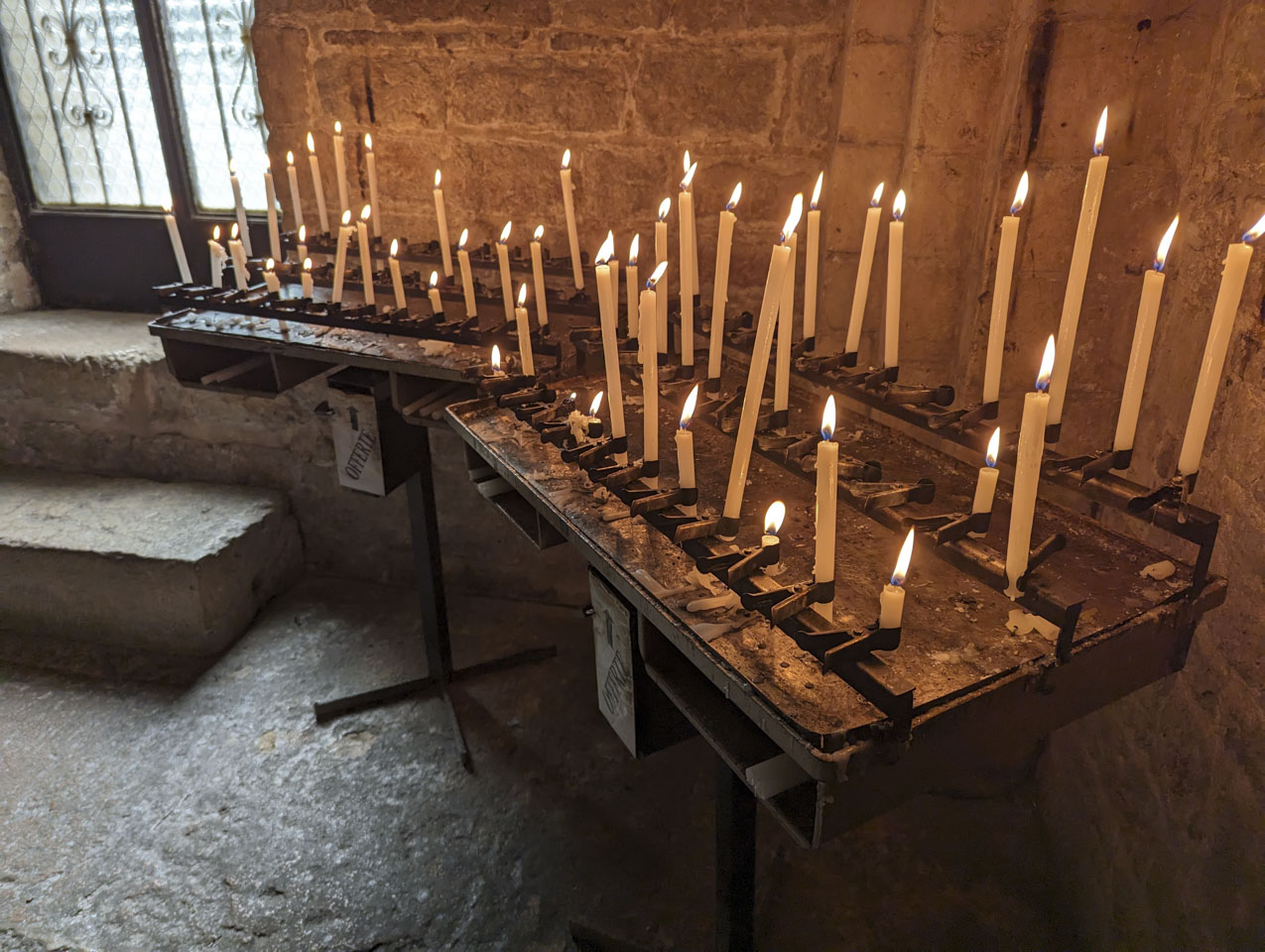
After leaving San Vittore, we drove back past the Tempio del Valadier to the actual village of Genga. You might remember that we visited this village in 2018. Surprisingly, Francesco had not been there before. After the short walk from the parking area to the entrance of the 'centro', a friendly sign greeted us. ('Castello' can be either castle or, more fittingly here, fortress.)
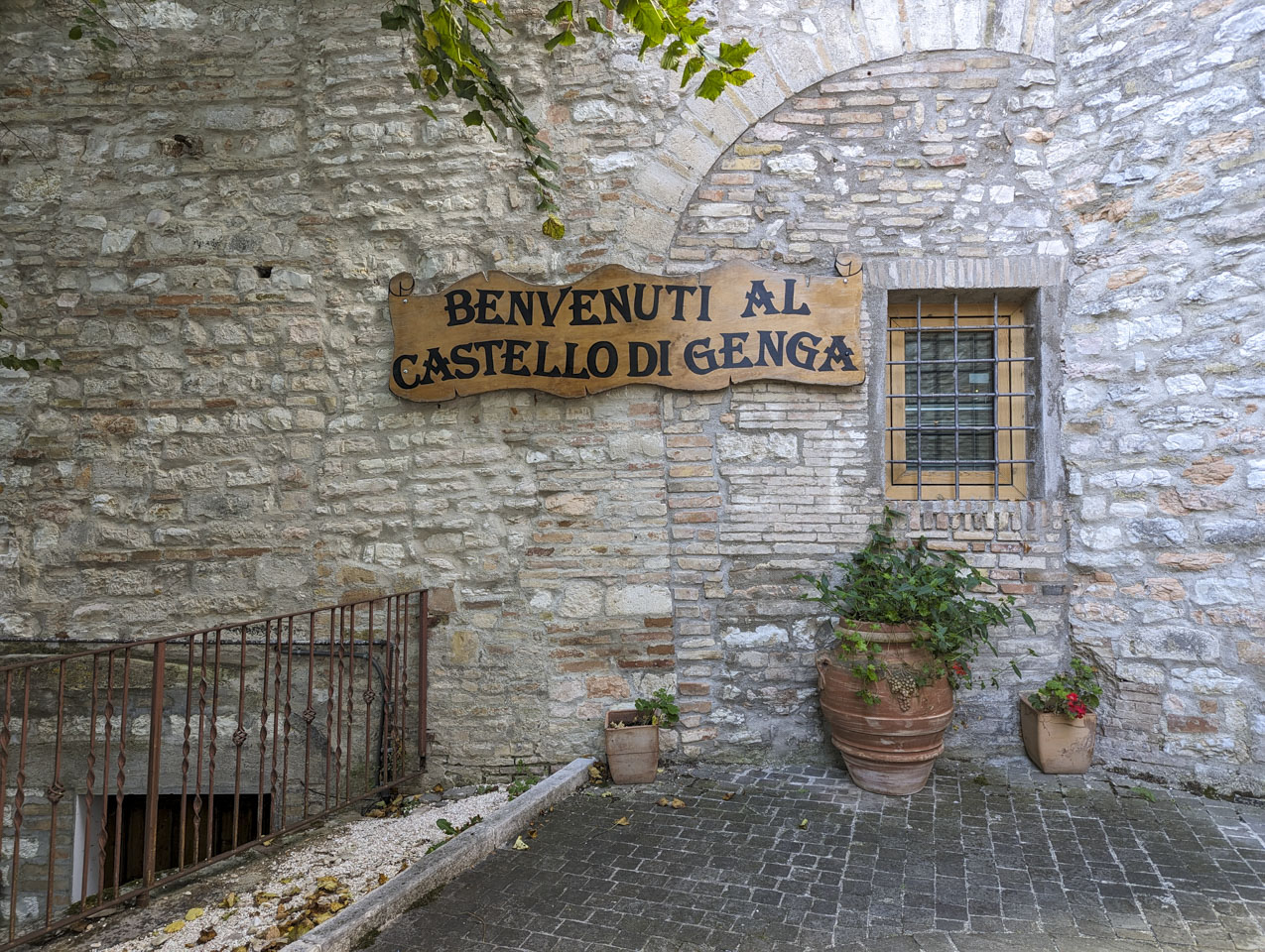
They left the 'roots' showing on some of the buildings; instead of flattening the ground and building up they used the existing rocks as part of the structures.
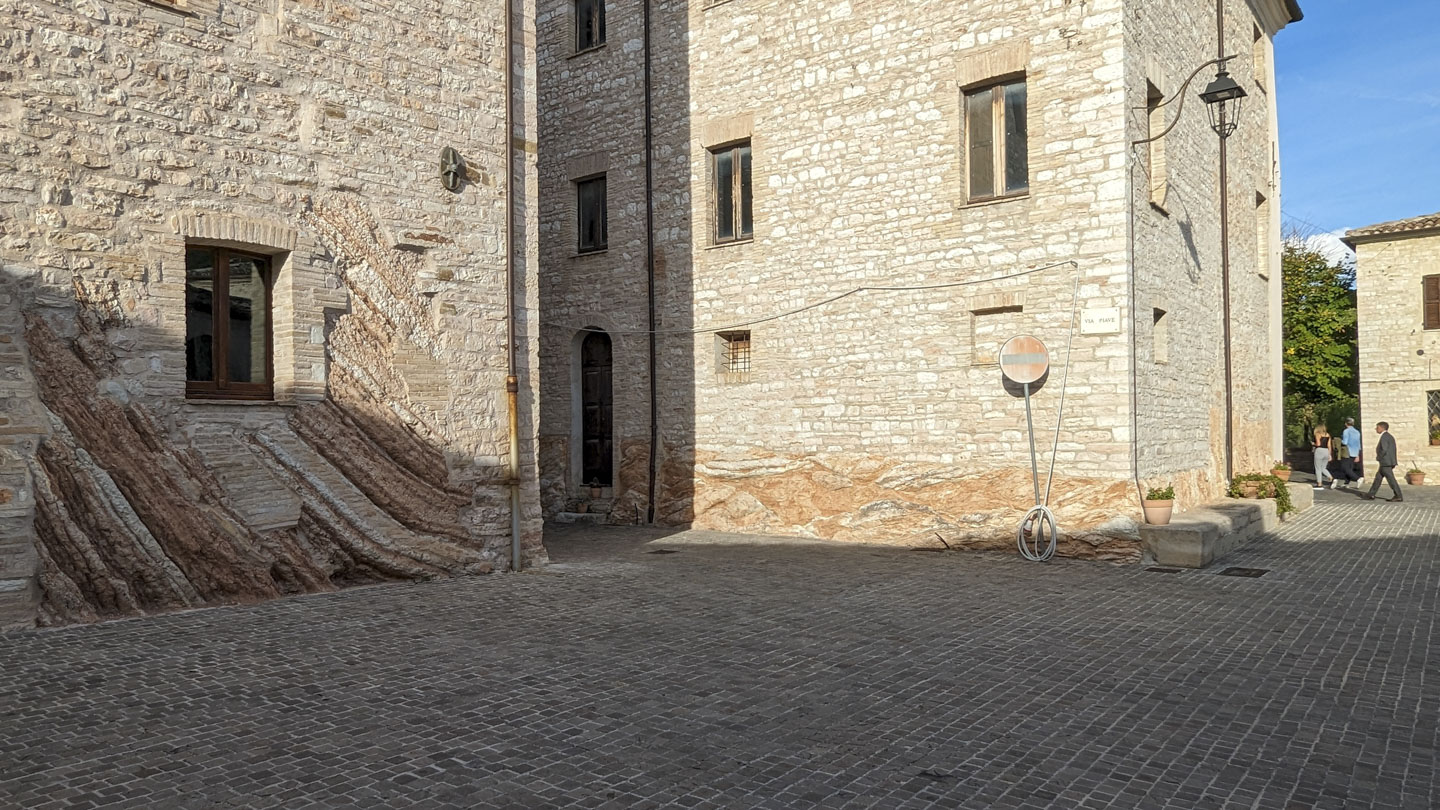
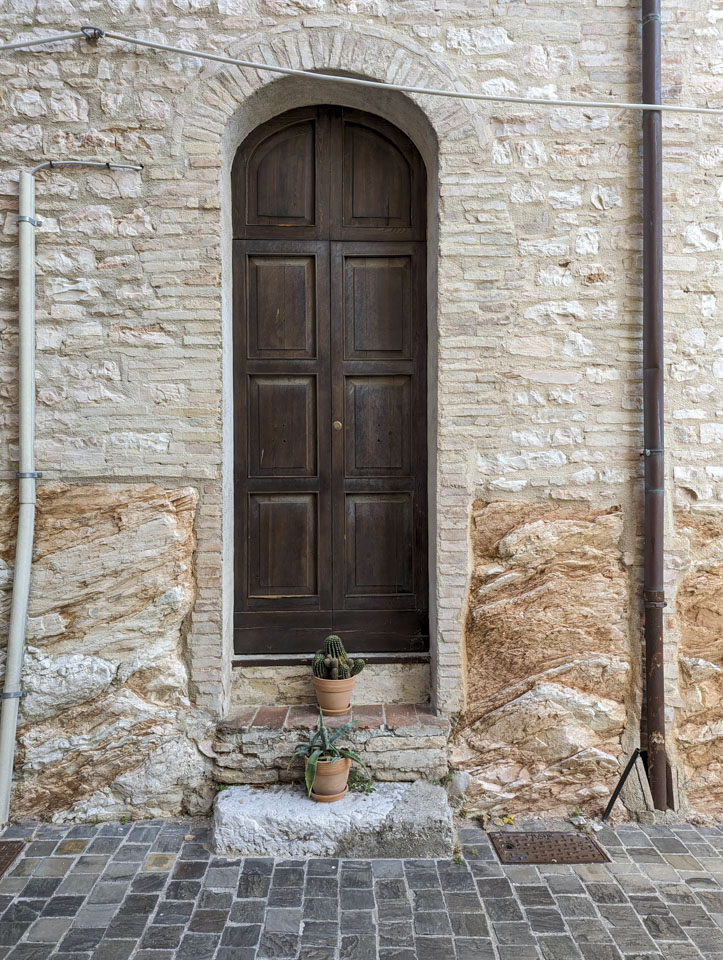
You might recall that Anne claims there are no 2 doors alike in Italy. However, we did find an exception here in Genga.
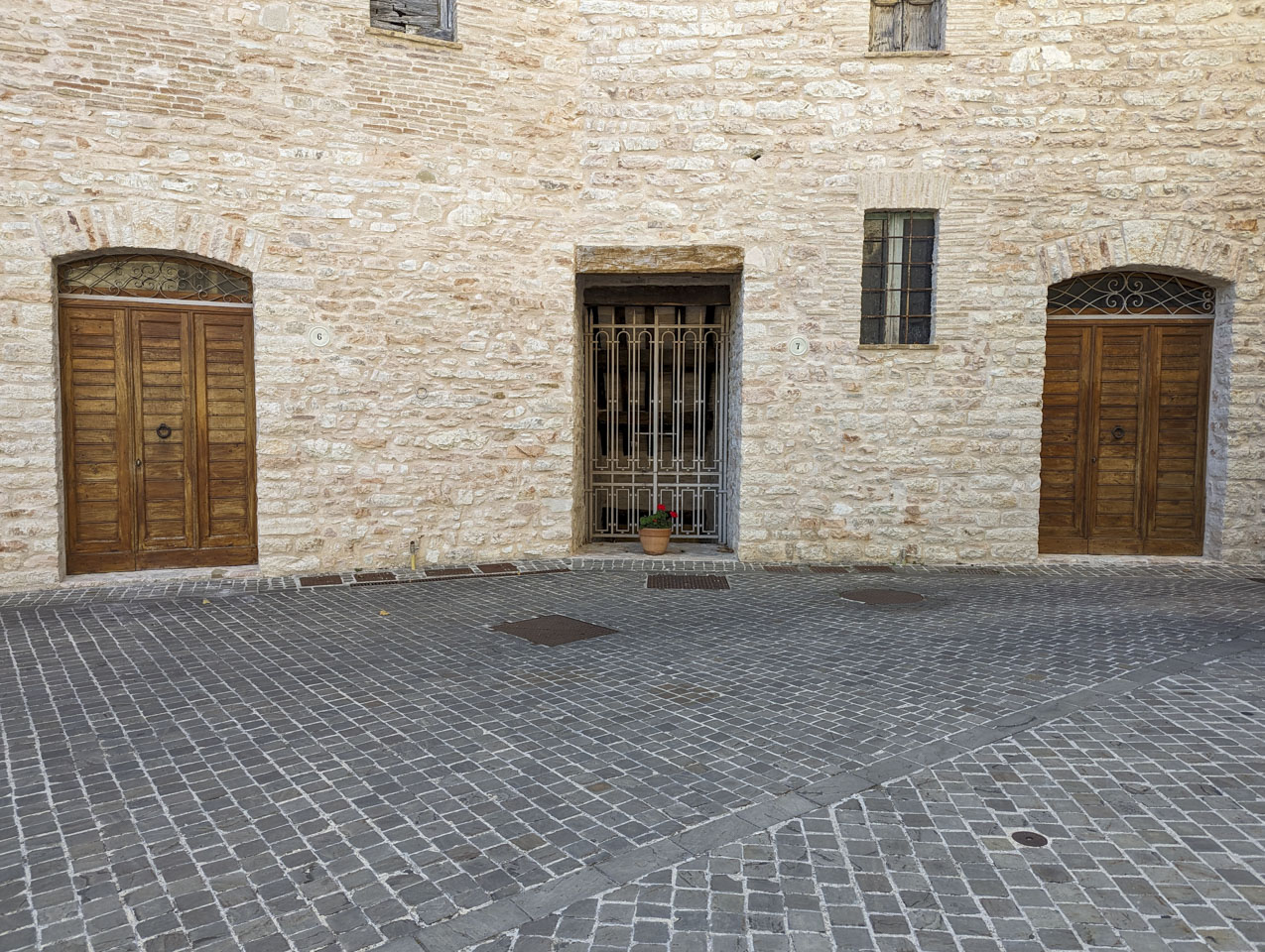
The interior of the local church has an interesting design painted on the ceiling.

Although a tree is blocking some of this view, it is still an interesting view, with an inviting ridgeline.
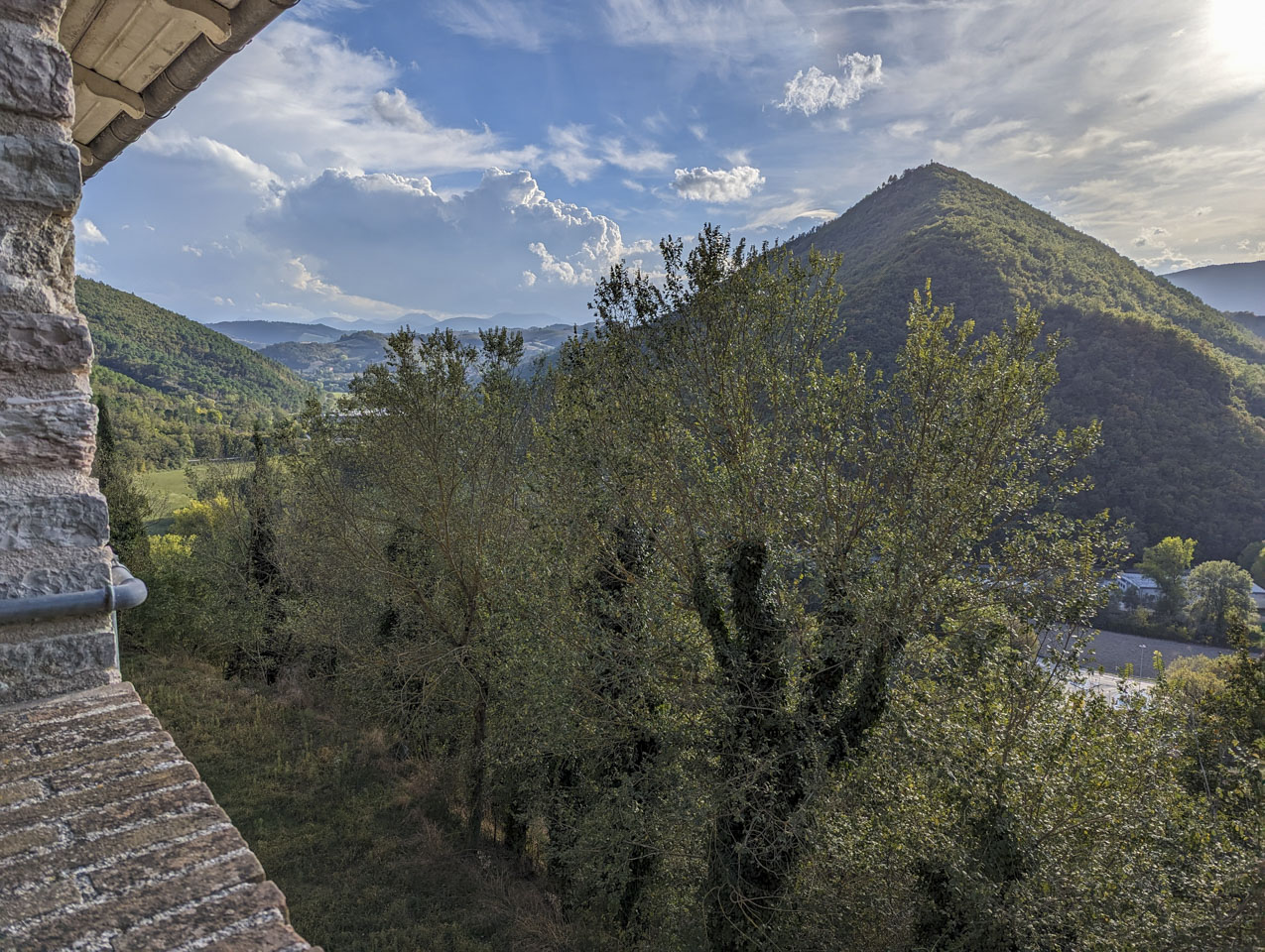
Anne and Francesco on some stairs in Genga.
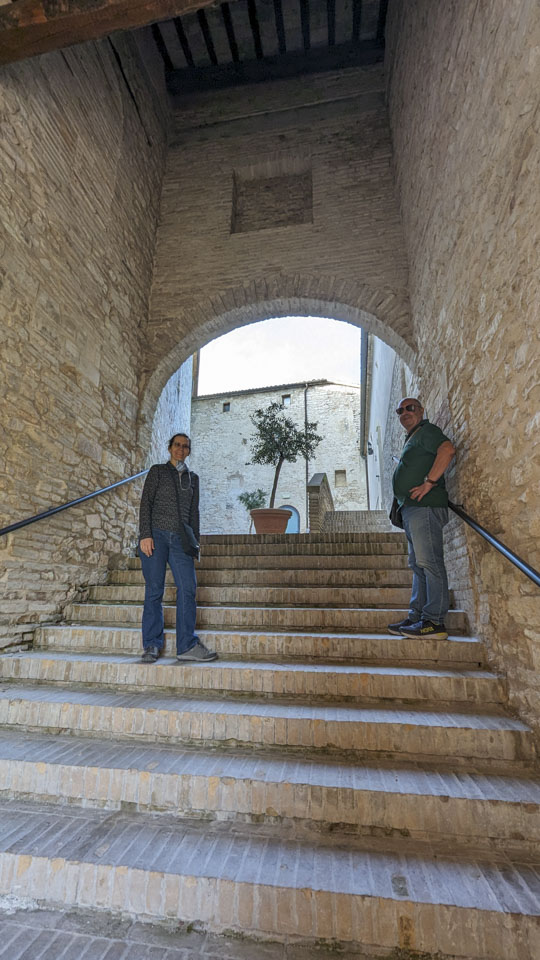
For some videos from Genga, you can look at our 2018 trip report.
Our final stop of the day was Arcevia, another village in Le Marche. It is set on a steep hillside.
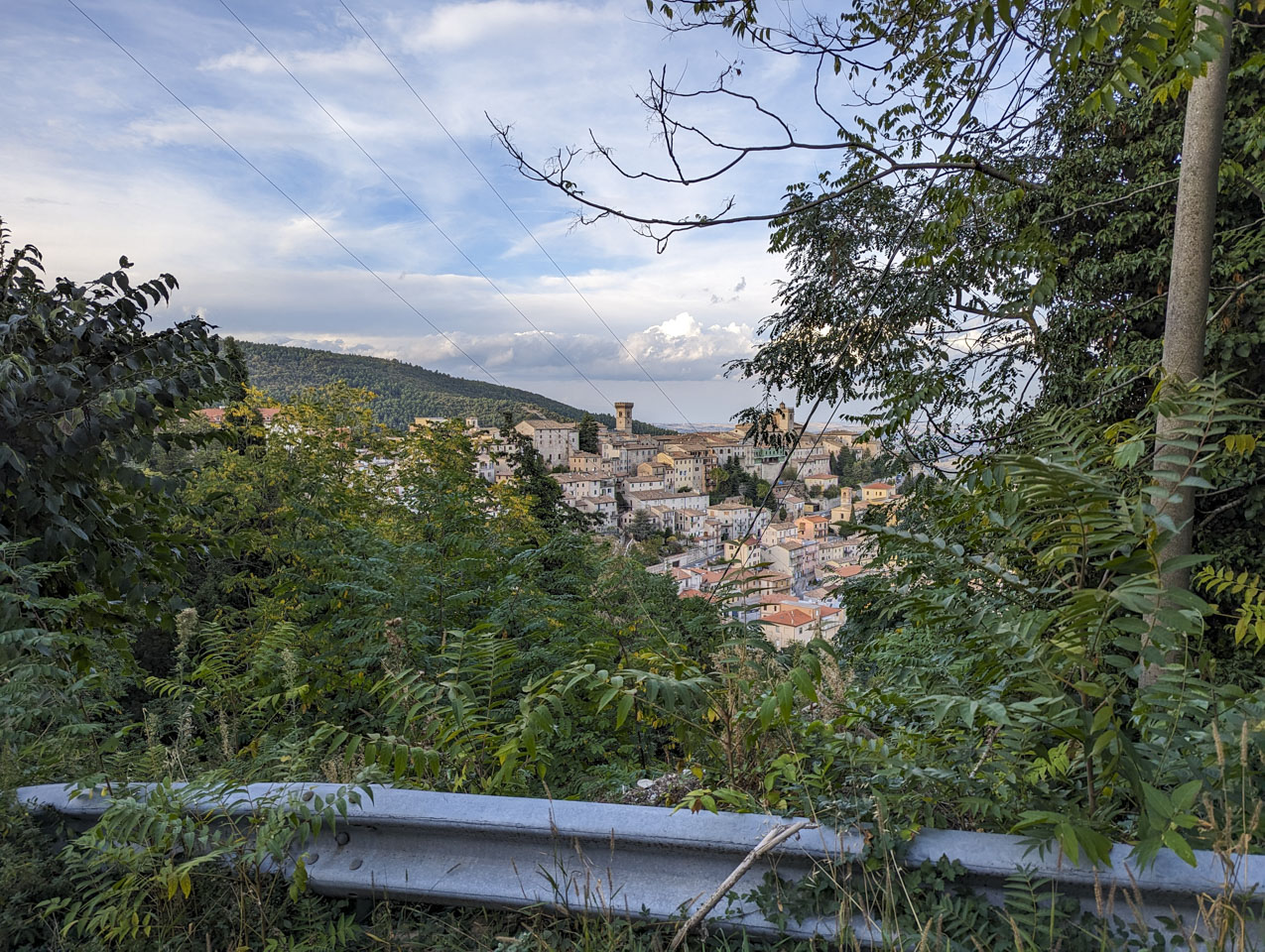
Parking in these little villages can be difficult, but Francesco is an expert. We thought the 'no parking' sign right next to the car was rather ominous, but it turns out that since it was against the wall that restriction was not in effect during our visit. He let us out of the vehicle, and then parked right up next to the wall. Francesco is an expert at this, and he was being kind to us. Back in Fano, only temporary parking is allowed on the street where he lives. When he does park there, he has to park with the driver door against the wall, and then has to crawl across inside the car to exit out the passenger door.
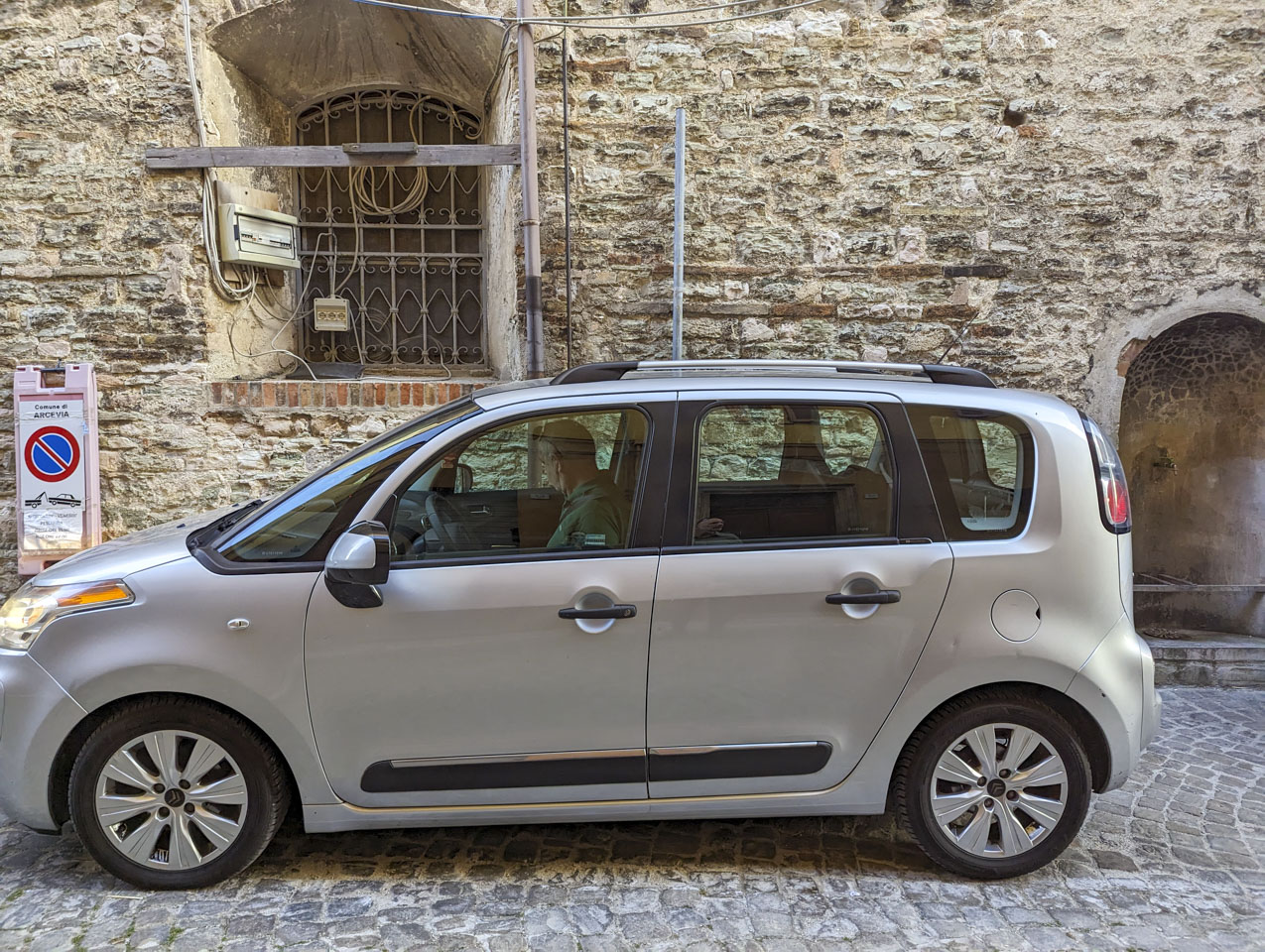
Paul took a quick video on our walk from the car to the central plaza of Arcevia.
You might recall that the bedroom of our Airbnb was over the (small) road. Here is another, bigger example of building over a road (or, in this case, a walkway).
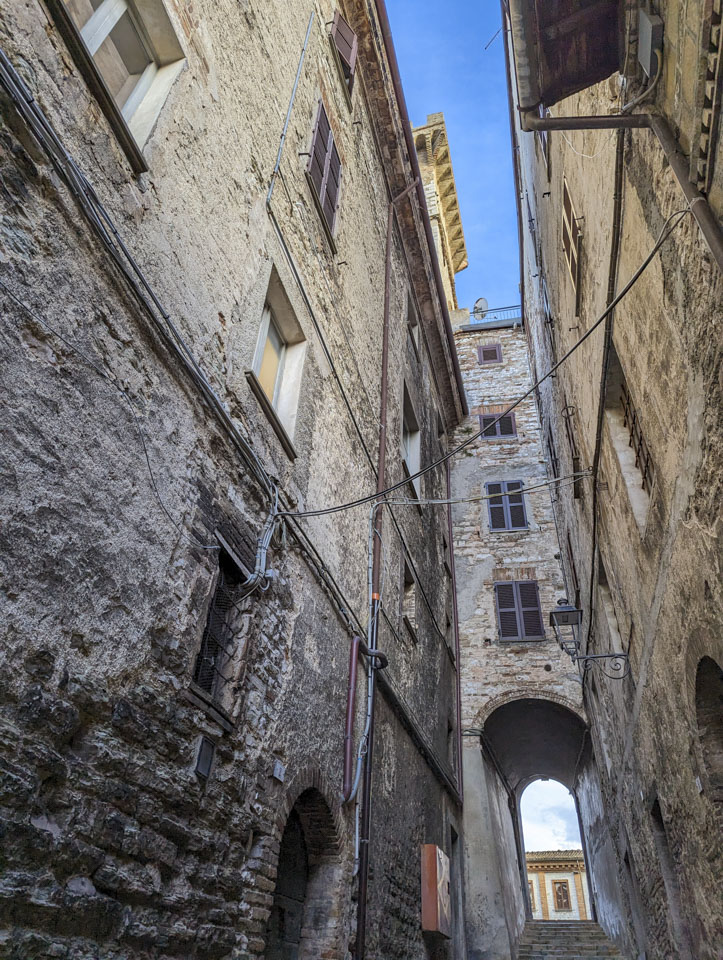
Off the central plaza was a 'macelleria', or butcher shop. It was closed, but of course we vegetarians wouldn't have patronized it anyway. Porchetta is a roast that originated in central Italy, and has been a favorite of many in Paul's family. And yes, those are a cow, chicken, and lamb painted on the window.
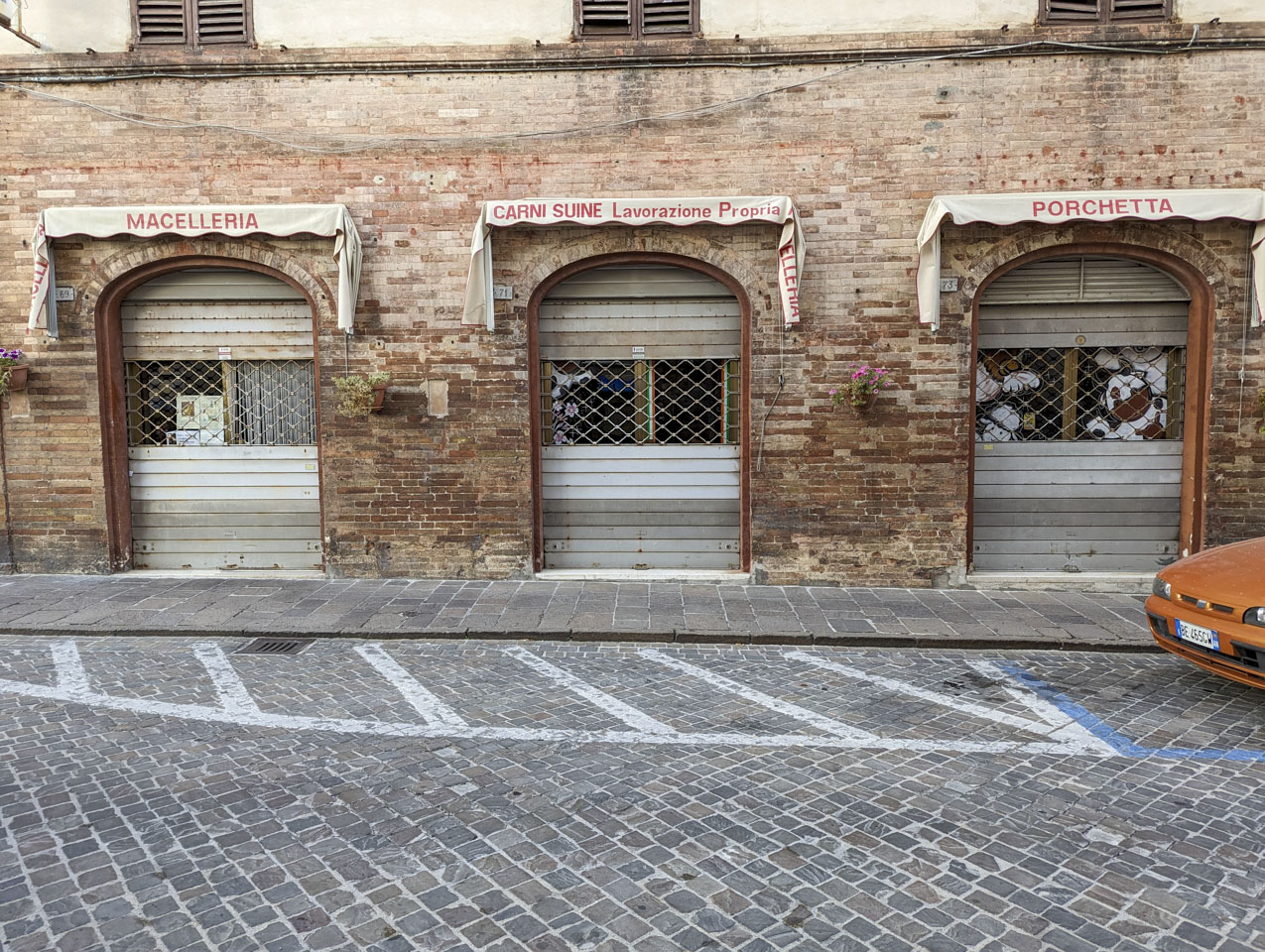
We took a quick break at the cafe. Back in the States it would have already been suppertime, but in Italy it was definitely too early for that. Paul is pointing out the potato chips, and telling Francesco that those are Paul's mother's favorite snack food.
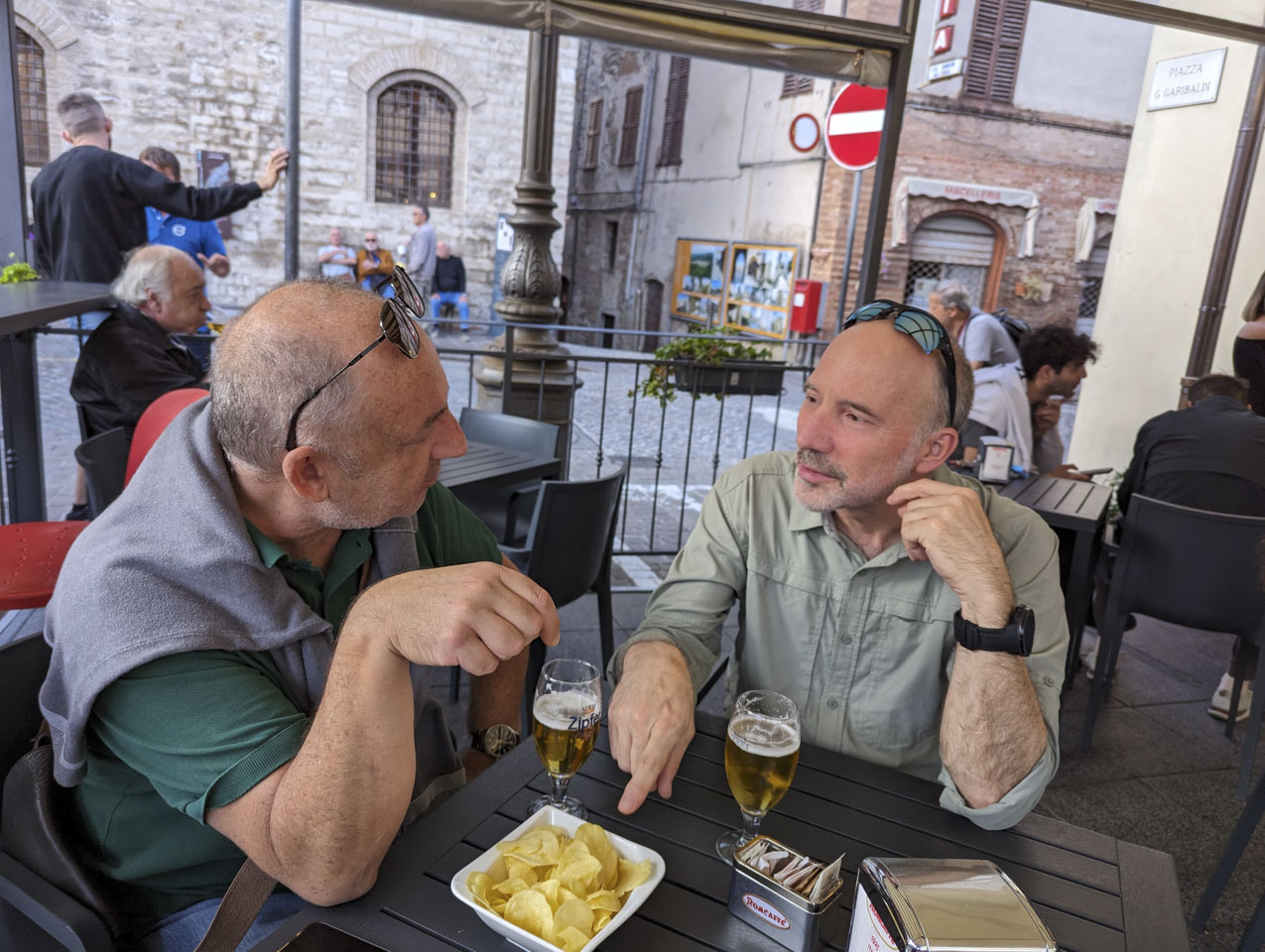
We took a stroll and saw a man standing in front of The Collegiate Church of San Medardo. A sign explained that this church has been mentioned in records since 1208 and is, rather unusually, named after a French saint who lived around the year 500. The current version of the church mostly dates to 1634.
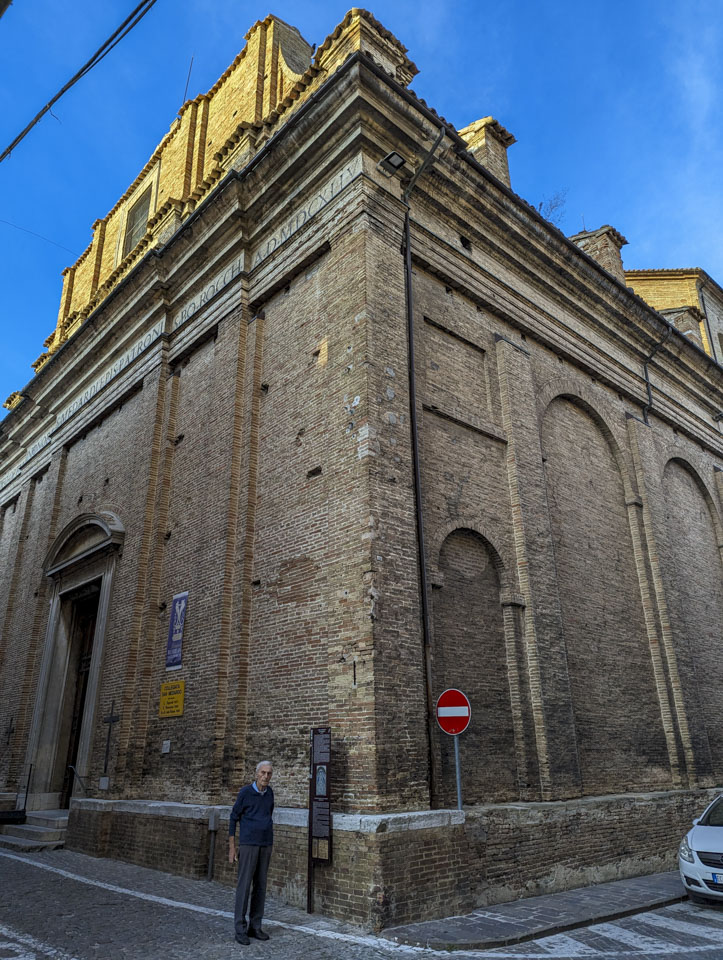
The inside of the church is pretty. The polyptych painting at the back of the church is by the artist Luca Signorelli (died 1523).
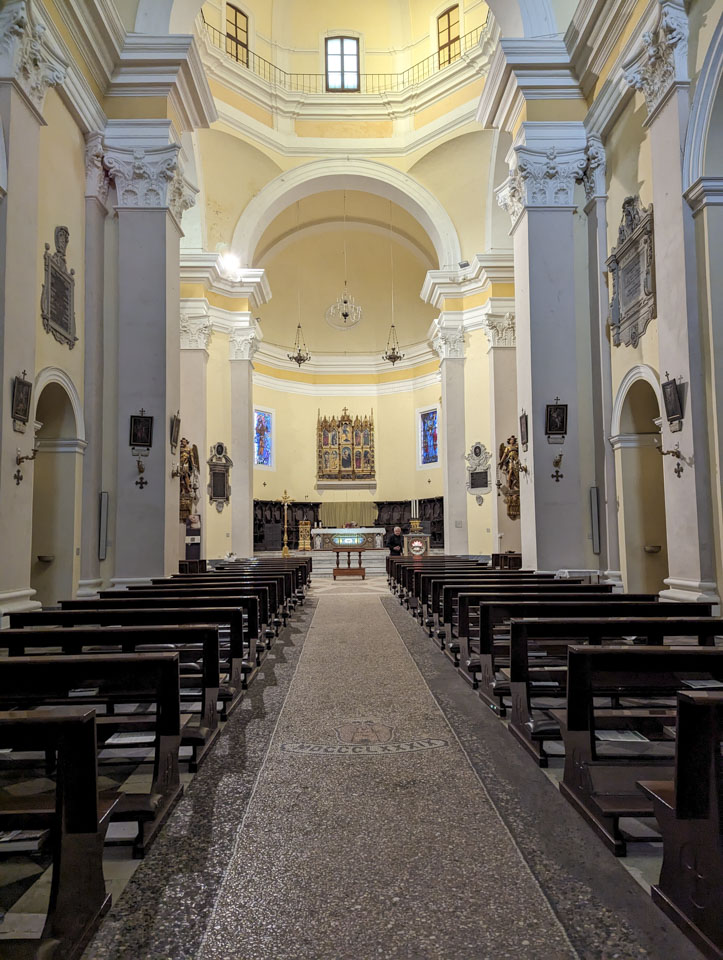
In one transept (side chapel) is an elaborate terracotta altarpiece. This work dates from around 1510, by Giovanni della Robbia, who used a technique invented by his great-uncle Luca della Robbia. This piece has had a difficult life, being disassembled and altered over the years. A recent restoration brought it back to the original form. The man we saw in front of the church was able to give us information on the artwork, although he spoke in Italian. Fortunately, there was also a helpful sign that had English on it. This is probably more information than most of you want, but the sign gives a description of the motifs: The top is Jesus Christ; directly below is Madonna and Child; next to her are Saint John the Baptist and Saint Jerome; the medallions above them are The Messenger Angle and Virgin Annunciate; angels on the outside edges. The small motifs below them are Mary Madgalene, Visit of St. Anthony to St. Paul; St. Jerome; Nativity scene; St. Anthony; St. Jerome and the lion; St. Mary of Egypt.
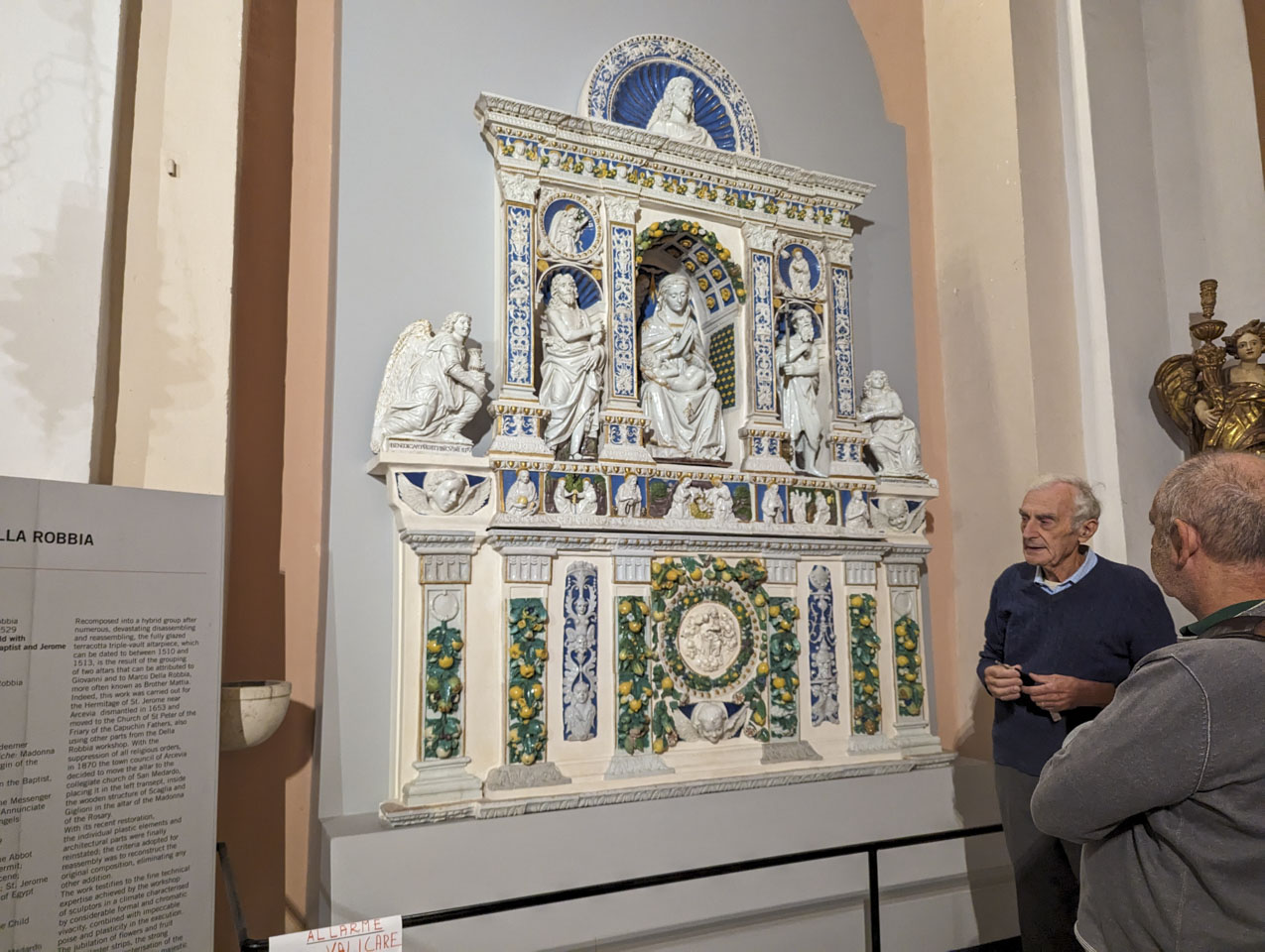
The man was very nice, and even gave Anne a commemorative book on Luca Signorelli and the recovery of the panel painting (polyptych). She hasn't managed to read it yet; it is still too advanced for her Italian language skills. We continued our walk around Arcevia and discovered this hand-operated pump for a well. We did not actually try using it, but it looks like it still functions.
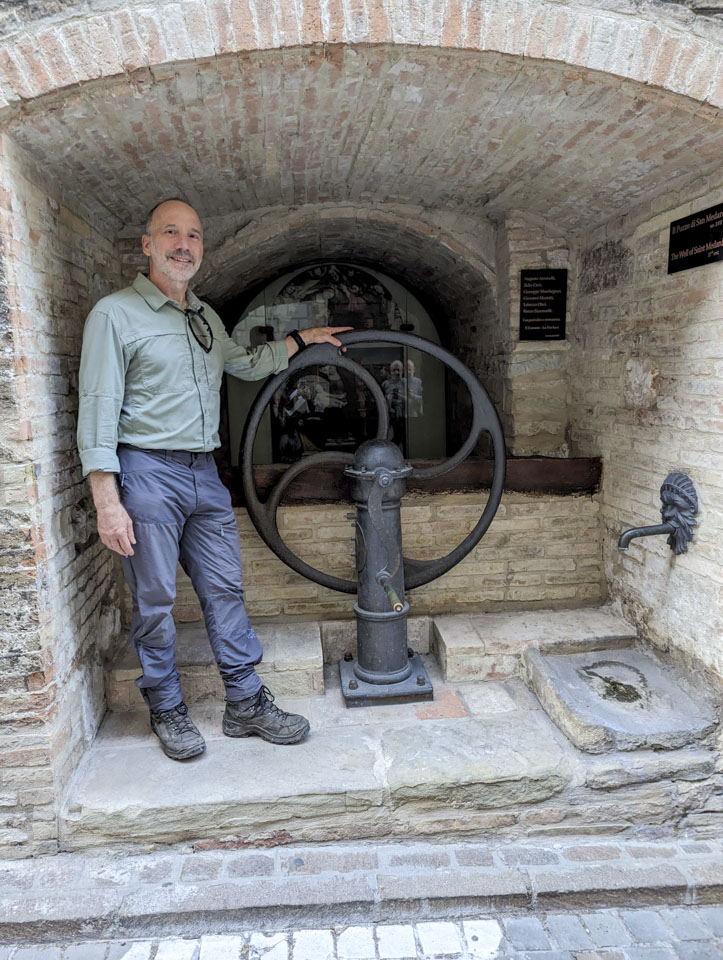
There was a really fun looking antique Fiat in the plaza!
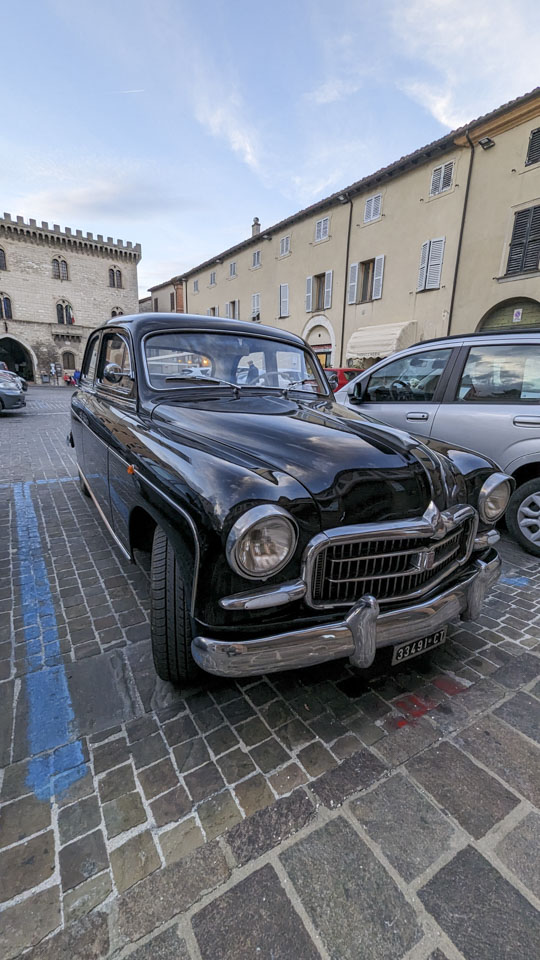
Updated January 2024